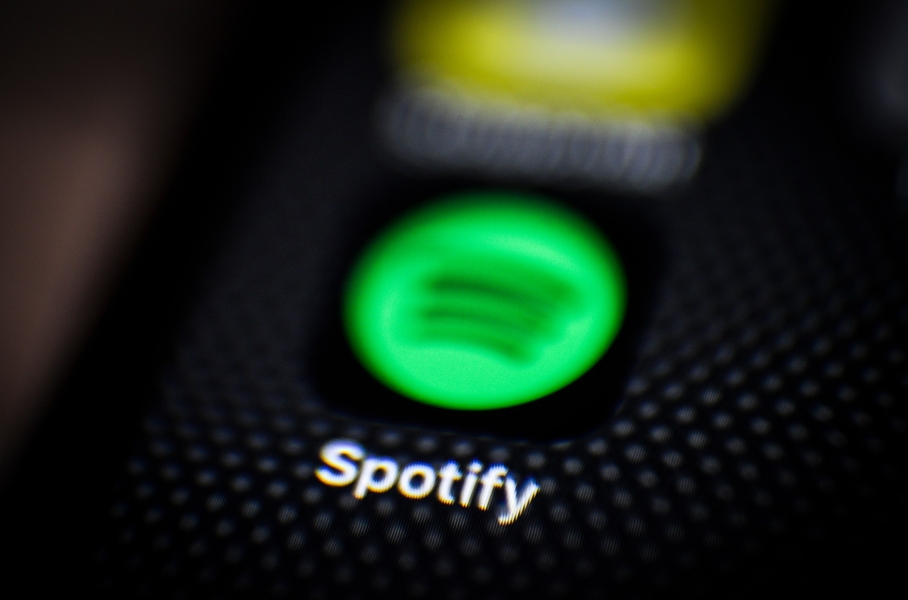
It was probably the ninth time Sabrina Carpenter’s hit single “Please, Please, Please” played, unprompted, that I decided it was time to quit Spotify. I’d been a Premium subscriber since the company started offering it in the United States in 2011 and I’ve generally been a Spotify fanatic who obsessively cultivates his collection of playlists. But, please, I can only take so much.
Spotify raised its prices in July for the second time in as many years. And while that price hike is part of why I quit, it’s still not the whole story. Basically, Spotify just started annoying me. I’d get peeved by ads for concerts popping up without warning and not being able to find a way to turn them off. The app also didn’t work as well as it used to. It froze sometimes, struggled to play music over my earbuds, and almost never connected to my Sonos speakers when I wanted it to. These are little gripes, but they add up, especially when you’re paying money for a service. And Spotify wants me to pay even more!
So I went shopping for a new music streaming service, which sent me down a rabbit hole as I tried to understand the state of the streaming entertainment industry in general. If I knew a little bit about the motivations of these companies, I thought I might make better choices and possibly even save some money. I ended up spending more money, but I also get more than music from my new subscription.
You see, I fell into the bundle trap. After quitting Spotify, I signed up for Apple One, a bundle that includes several Apple services, including Music and iCloud storage. I ended up giving Apple the money I’d stopped spending on Spotify and then some. And I got some services I didn’t really want — looking at you, Apple Arcade — although maybe I will want them in the future.
Signing up for bundles is what almost all the streaming entertainment companies want you to do. That doesn’t mean bundling has to be bad. The constantly changing bundling offerings from media companies, phone companies, and tech companies can be confusing, and a bundle of subscriptions can cost more than what you’re already paying for. If you’re willing to be flexible, however, you can get bundles to work in your favor. In other words, you fall into a bundle trap but climb right back out in better shape.
Bundling is hardly a new strategy. It’s how cable television worked decades ago: You pay one set rate for cable service that includes a bunch of channels you don’t want. In the streaming era, bundling usually means you get access to several streaming services for one price, although you might also get access to services beyond TV, including music and games.
There are several ways to fall into the bundling trap. Like me, you might want one service, like Apple Music, and take the bundle because it’s not much more expensive. You might also want to get Hulu to watch the latest season of The Bear. But when you can also get access to Disney+ and Max for a few dollars more, why not try it? You can always cancel in a month.
“There’s this constant tug and pull with audiences,” Anthony Palomba, an assistant professor of business administration at the University of Virginia, told me. “They’ve given too much content to people.”
Again, this is not new. What is new this year, however, is that bundles are getting bigger and more confusing. Back in 2019, for example, you could pay $13 for a bundle that included Disney+, ESPN+, and Hulu, all ad-free. Makes sense since all three services are Disney-owned. Fast forward to this spring, however, and major media companies started offering bundles that include services outside their own properties. Disney and Warner Bros. Discovery will soon offer a bundle with Disney+, Hulu, and Max, though they haven’t announced a price. Verizon already offers its customers a bundle with ad-supported versions of Netflix and Max for $10. And don’t forget about StreamSaver, a bundle for Comcast internet customers that includes Peacock, Netflix (with ads), and Apple+ for just $15 a month.
Is your head spinning yet?
This is the plan. In the past couple of years, media companies have faced a reckoning: They realized they could no longer spend millions to win over new streaming subscribers, as legacy brands, like Disney, tried to catch up with Netflix. These new streaming services needed to start making money. On top of that, they have a loyalty issue: Many people subscribe to one service, likely to watch a hit show, and then unsubscribe a month later. I did this for Succession on HBO Max (RIP), for example, and you’ve probably done it for your favorite show, too. (Pro tip: If you do this, don’t forget to cancel.) Churn rates at the major streaming services have more than doubled in the past five years, according to the research firm Antenna. But when bundles are involved, multiple research companies say customers tend to stick around. So confusing or not, bundles are back.
One surprising thing
If you’re nervous — like I was — about switching music services because you’ll lose all their carefully curated playlists, have no fear. When I made the switch, I was surprised to learn how many services will do this for you. I used an app called Playlisty that made it easy to import dozens of playlists from my Spotify account to Apple Music for a one-time fee of $3. The only thing I’m really missing is the personalized recommendations Spotify’s algorithm spent years perfecting. But I’m sure Apple’s algorithm will surprise and occasionally delight me, too.
I realize we’ve strayed quite a bit from my gripes about Spotify, but the chaos in the world of streaming video bundles has spread to the audio world. Because all music streaming services offer the same catalog of songs, each one has to find a way to stand out, and that often means access to other features or services. For Apple Music, which is included in Apple One, that’s generally been its lossless audio offerings and interoperability with Apple devices. YouTube Music lets you watch a song’s music video with a single tap, and it comes free with YouTube Premium. Amazon Music is essentially a perk you get with Prime membership.
“Spotify is competing with companies that never need to make a dollar on music or streaming businesses,” said Larry Miller, director of the music business program at NYU Steinhardt. “They use music as a tool to help pull users into their ecosystems.”
In other words, the streaming music services are bundling up — except for Spotify. Spotify did start offering an audiobook service to its Premium members late last year. (Songwriters have complained that they’re being paid less as a result.) But don’t expect Spotify to launch a Netflix competitor any time soon. Paying $12 a month just for music seems like a different proposition in 2024 than it did a decade ago. Why stop at music when I know I’m going to want to watch TV, play video games, and even enjoy some celebrity-narrated fitness classes one day. Much to my surprise, thanks to Apple Fitness+, I actually love going on walks narrated by Dolly Parton.
For me, when I got annoyed with Spotify, Apple Music was an obvious choice. The audio quality is definitely better than Spotify, and the app glitches less often. The fact that I could bundle Apple Music with some other Apple services I was already using, especially iCloud storage, sealed the deal. And after spending a couple of weeks with my new bundle, I feel good about it. I even canceled Max, since I gained a streaming video service in Apple TV+. Time will tell if it all holds my attention, and if it doesn’t, I can always try something else or even go back to Spotify. Remember that the service you sign up for today won’t be the same in a month or a year, given how quickly the industry is changing. You can always cancel and choose a different path.
This all means there’s no better time to be an assertive consumer when it comes to spending money on music, TV shows, and movies. When you feel like the services you’ve been using aren’t serving you anymore, there’s little downside to unsubscribing and spending your money elsewhere. You’ll probably even get a free trial.
A version of this story was also published in the Vox Technology newsletter. Sign up here so you don’t miss the next one!
Source: vox.com






